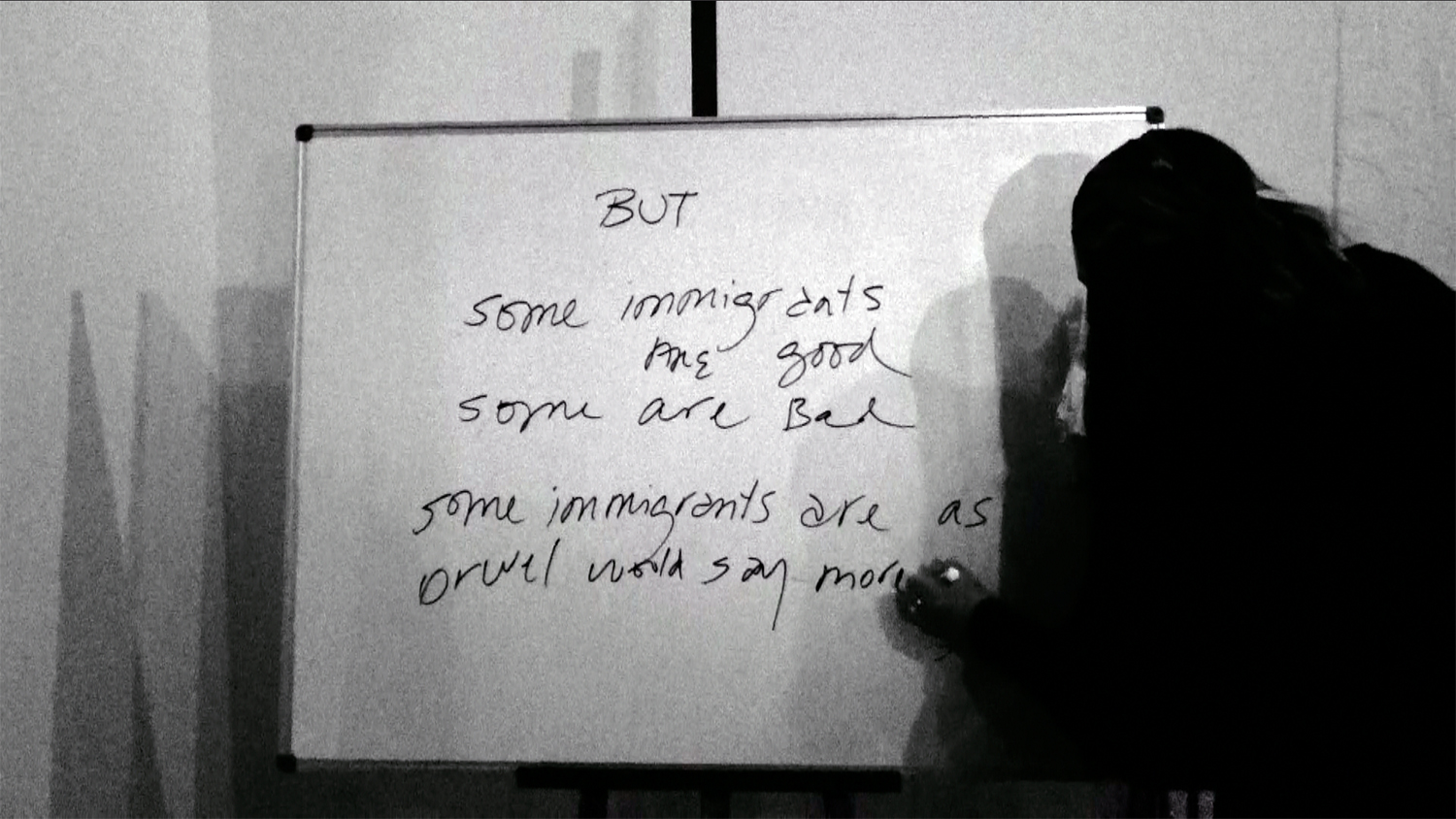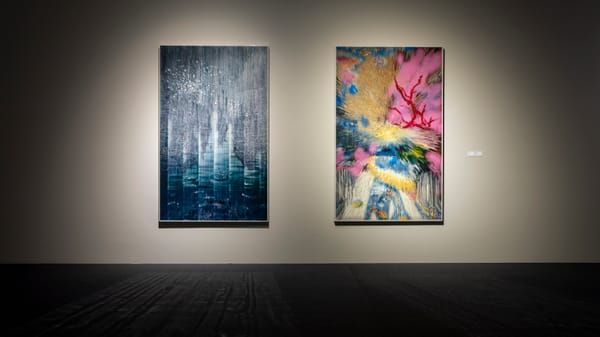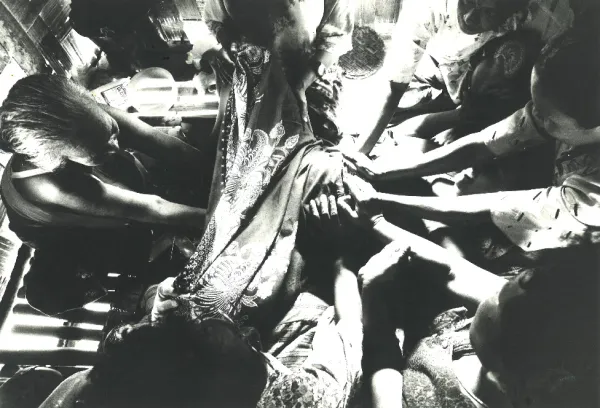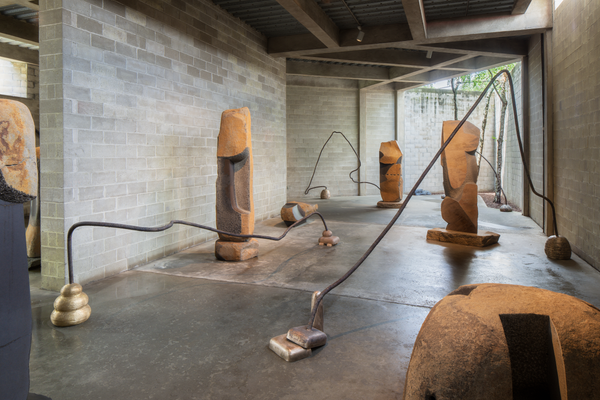Shows
Ghazel’s “Mismappings”


Iranian artist Ghazel fuses personal history with political identity in “Mismappings,” her first solo exhibition in the United States. Currently on view in East Williamsburg at a converted factory that houses New York’s International Studio & Curatorial Program (ISCP), the show consists of cartographical pieces and video installations—a body of work that spans nearly two decades. Since her 2001 residency with ISCP, the Paris-based Ghazel has shown widely across Europe, and her art can be found in the permanent collection of the city’s Centre Pompidou.
In light of America’s recent travel ban, Ghazel’s grappling with issues of immigration and borders couldn’t be more timely, nor prove more complicated. Originally scheduled to fly directly from Tehran to the US, the artist was forced to reroute her itinerary in order to attend to her own opening. “Even getting the visa was crazy,” said Kari Conte, director of programs and exhibitions at ISCP, who had been planning Ghazel’s return for the past year and a half.
Ghazel addresses these logistical challenges of navigating between Iran and the West in Road Movie 14 (2017), her newest piece for “Mismappings,” which she performed at the opening reception. The projected video documents the artist writing on a whiteboard before an audience. The viewer inhabits the same space of that initial crowd on opening night, anticipating each word as she recounts a range of stories—from a 30-year-old tragedy about an Iranian man who tried to bring his wife over in a suitcase to a first-hand account of her own experiences as a migrant. She begins by writing, “In fact everyone here is an immigrant except for the Native Americans,” then erases the words and continues, “BUT some immigrants are good, some are bad, some immigrants are as Orwell would say more EQUAL than others.” The performance concludes with Ghazel taping up a wanted poster advertising for a husband—a nod to one of her former works that deals with the subject of citizenship.


In another video, Untitled 4 (2016), Ghazel can be seen crouched on the floor as she repetitively folds paper airplanes out of world maps. Her creations don’t fly very far in the small room. The uninterrupted performance lasts for over an hour, and her exhaustion is palpable by the end.
Best exemplifying the artist’s one-take, DIY-style is Me (2000–03), which features a triptych of randomly selected, minute-long films. Reminiscent of Buster Keaton or Charlie Chaplin’s Little Tramp character, Ghazel infuses an element of slapstick into otherwise mundane chores such as ironing, weightlifting, or playing a musical instrument. The chador (a piece of full-body clothing typically worn by Iranian women) she wears while performing these activities calls attention to the physicality of her movements. In one skit, the text “I like feeling like a fish (free)” appears on screen, followed by Ghazel, fully dressed, walking into the ocean. Other times, the tongue-in-cheek one-liners allude to the threat of violence: the imperative “Never sleep alone” reveals Ghazel going to bed with an assault rifle, and “Never go out naked” concludes with Ghazel tucking a saw into her cloak before heading out the front door. On the one hand, she draws on the “black humor” characteristic of Iranian culture and invites us to laugh with her; on the other, she perhaps anticipates the viewer’s discomfort at finding a woman dressed in a chador funny, and challenges us to examine the root of that laughter.
Forming the crux of the show is two series of “mapworks” capturing the essence of Ghazel’s identity as an artist in exile. Having left Tehran while still a teenager during the Iraq-Iran War of the 1980s, she expresses feelings of rootlessness and confusion in Dyslexia (2015–17), using ink to blot out country names, borders and flags on actual Iranian-produced maps. Black paint completely obliterates the land masses in Marée Noire (2016), perpetuating an almost apocalyptic overtone. Yet, out of the dark stains sprout trees and silhouettes of houses, illustrated in childlike drawings. The removal of these national boundaries, then, would seem to promise a kind of hope.
While the current humanitarian crisis concerning Muslim refugees remains politically fraught, Ghazel takes a bold stance against nationalistic impulses to divide. Her mapworks, in particular, offer us the chance to conceive of the world not as it is, but as a canvas with renewed possibilities.
Ghazel’s “Mismappings” is on view at the International Studio & Curatorial Program, New York, until April 7, 2017.







